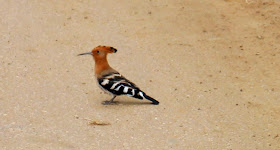Imagining life without seeds is
practically impossible. Thus, it is very important to study and know about seeds
in depth and save the seed diversity. The seed forms the basic input/ lifeline
of the Agriculture. As the world
progressed, population increased enormously, due to which there has been a constant
pressure on developing high yielding,
productive and efficient seeds. The continuous usage of such hybrid variety seeds
has resulted in rapid erosion of bio-diversity of our country. Fortunately, a
small fraternity of farmers have
preserved and re-used their diverse indigenous seed varieties over generations.
Kudos to these farming communities for having contributed in maintaining and
developing our agricultural heritage and diversity. Not many of us are aware that India has one
of the richest germplasm collections in the world. India can also boast of being home to more
than 60,000 rice accessions of the 425,000 accessions of the world.
 |
| Welcome To Seed Festival |
 |
| Celebrating the Rich Heritage of Traditional Seed Diversity |
In this regard, Sahaja Samrudha,
in collaboration with Alliance for Sustainable & Holistic Agriculture
(ASHA) had organized the Bengaluru Seed Festival during the last weekend at
Veterinary College, Hebbal, Bengaluru to “celebrate the rich heritage of
traditional seed diversity”. Many seed saver groups from various parts of the
country, working for on-farm conservation and promotion of seed diversity
participated actively. There were more than 1000 varieties of different crop
seeds on display along with relevant literature. All the stalls were quite
informative. A few stalls stood apart by displaying unique products. Bio-diversity
Management of Edavaka grama of Wayanad, Kerala displayed about 30 varieties of tubers
(that grow underground), Vagadhara of Rajasthan displayed a variety of medicinal shoots and tubers while another stall
displayed rich varieties of forest tree seeds.
 |
| Different Rice Varieties of Karnataka |
 |
| Black Rice |
 |
| Wild Wheat |
 |
| Different Varieties of Bajra and Maize |
 |
| Hot and Spicy from Meghalaya |
 |
| Varieties of Millets |
 |
| Medicinal Tubers and Shoots from Rajasthan |
 |
| Varieties of Tubers from Kerala |
 |
| Collection of Forest Tree Seeds |
Why is such an effort significant
and how will it influence the future? A classical example of saving indigenous
seed varieties and developing better ones in the same line is that of Late Mr.
Lakshmanaiah, popularly known as “Ragi Lakshmanaiah/ Ragi Brahma”. As a student,
I was fortunate enough for having studied and learned about this great man, who
single handedly worked and developed the best and the highest yielding variety
of Ragi (Finger Millet) named INDAF series, using various indigenous varieties
of Ragi. Indaf series, unlike today’s Hybrid and GM varieties, is one of those rare
varieties, which possesses all the properties of indigenous ones, apart from
having the advantage of being very high yielding and reusable. During 1950s, Mr.Lakshmanaiah
quit the coveted job of a clerk in the Indian railways in order to pursue his
passion for agriculture. The rest is history though unknown to the outside
world. Today, Indaf is the most popular Ragi variety grown across the driest
regions of Karnataka, Andhra Pradesh and Tamil Nadu, where Ragi is the staple
food. Many such varieties have been developed but have lost the race with time
against today’s Hybrid and GM varieties, leading to a total imbalance in the
eco-system by appreciating indiscriminate use of chemical fertilizers and
pesticides.
 |
| Accessories made out of Seeds |
 |
| Our Field, Our Seed, Our Right |
 |
| Effects of Organic and Chemical Farming |
The exhibition aimed at educating
people, especially those linked with or involved in the field of agriculture,
towards bigger steps of using, reusing and preserving the indigenous seed
varieties. The seed exhibition in total was an educative one and managed to
attract a heterogeneous crowd.
Participants:
3. Sri
Masanasiddeshwar Savayava Krishikar Sangh, Munnahalli, Gulbarga Ph: 9972157413
4. Desi
Krishikar Balaga, Haveri, Ph: 9845890411, 9980679824
5. Hasiru
Consultants and Mkt Pvt Ltd., Ph: 9591984709
6. Desi
Uthana; Web: www.uthana.com, Ph: 9341415399, 7760596275
7. Bio-Diversity
Management Committee , Edavaka, Wayanad, Kerala
8. Agricultural
Training Centre, Fulia, Nadia, West Bengal
.jpg)
.jpg)
.jpg)


































